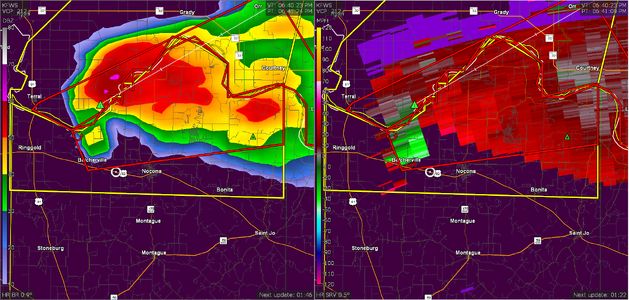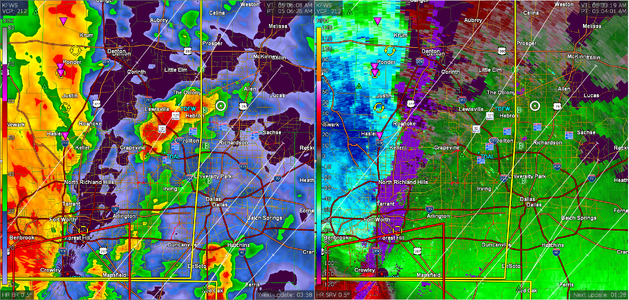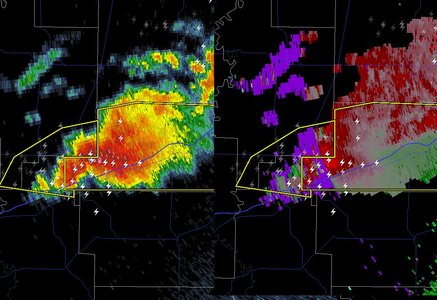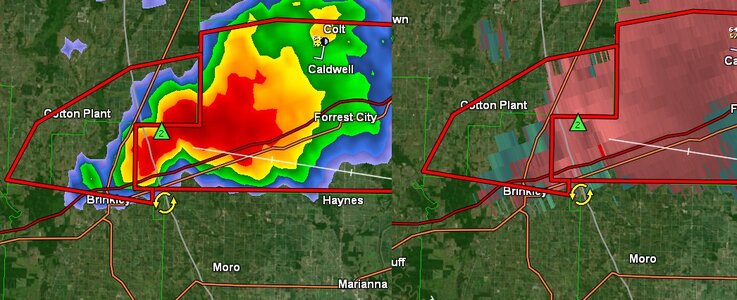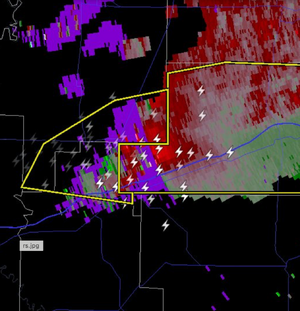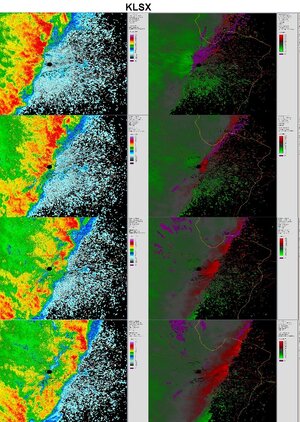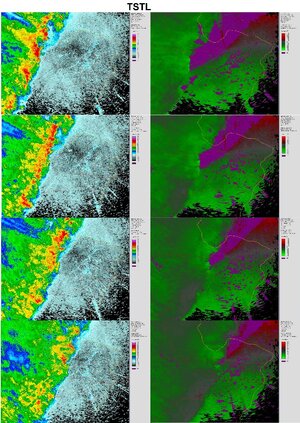Dan Robinson
EF5
I learned about a blind spot in radar data I was previously unaware of that has safety implications for chasers. This may be one of those things that everyone else already knows about and I'm just late to the party, but I figured I might not be the only one.
There are blackouts in the velocity data (BV, SRV) we use all of the time that can result in couplets going completely undetected. In a nutshell, there are large gaps/holes in velocity data that mostly occur in "RF rings" at a certain distance from the radar. These occur mostly within 100 miles of the radar, but can happen at much closer distances. They are large enough to completely obscure small-scale features including velocity couplets.
Level 2 and displays like Radarscope's Super-Res will show these data holes in their raw form (presented as purple-shaded echoes in RS). But some Level 3 data displays, including GRLevel3, employ some type of smoothing/interpolation that can deceptively hide the presence of a couplet that is being obscured by these holes.
It may be coincidental, but I've found myself in multiple situations in the past few months where I was in the immediate vicinity of a rain-wrapped meso within these blackout areas in which I had zero awareness of the presence/intensity of a circulation. I had one on October 30 of last year when a storm's RFD surge in St. Charles, Missouri was completely within a velocity blackout zone on both the KLSX and TSTL radars, at very close range to both radars.
I posted this Twitter/X thread with some examples from yesterday. There are some good technical responses by Peyton Camden:
There are blackouts in the velocity data (BV, SRV) we use all of the time that can result in couplets going completely undetected. In a nutshell, there are large gaps/holes in velocity data that mostly occur in "RF rings" at a certain distance from the radar. These occur mostly within 100 miles of the radar, but can happen at much closer distances. They are large enough to completely obscure small-scale features including velocity couplets.
Level 2 and displays like Radarscope's Super-Res will show these data holes in their raw form (presented as purple-shaded echoes in RS). But some Level 3 data displays, including GRLevel3, employ some type of smoothing/interpolation that can deceptively hide the presence of a couplet that is being obscured by these holes.
It may be coincidental, but I've found myself in multiple situations in the past few months where I was in the immediate vicinity of a rain-wrapped meso within these blackout areas in which I had zero awareness of the presence/intensity of a circulation. I had one on October 30 of last year when a storm's RFD surge in St. Charles, Missouri was completely within a velocity blackout zone on both the KLSX and TSTL radars, at very close range to both radars.
I posted this Twitter/X thread with some examples from yesterday. There are some good technical responses by Peyton Camden:
Last edited:

